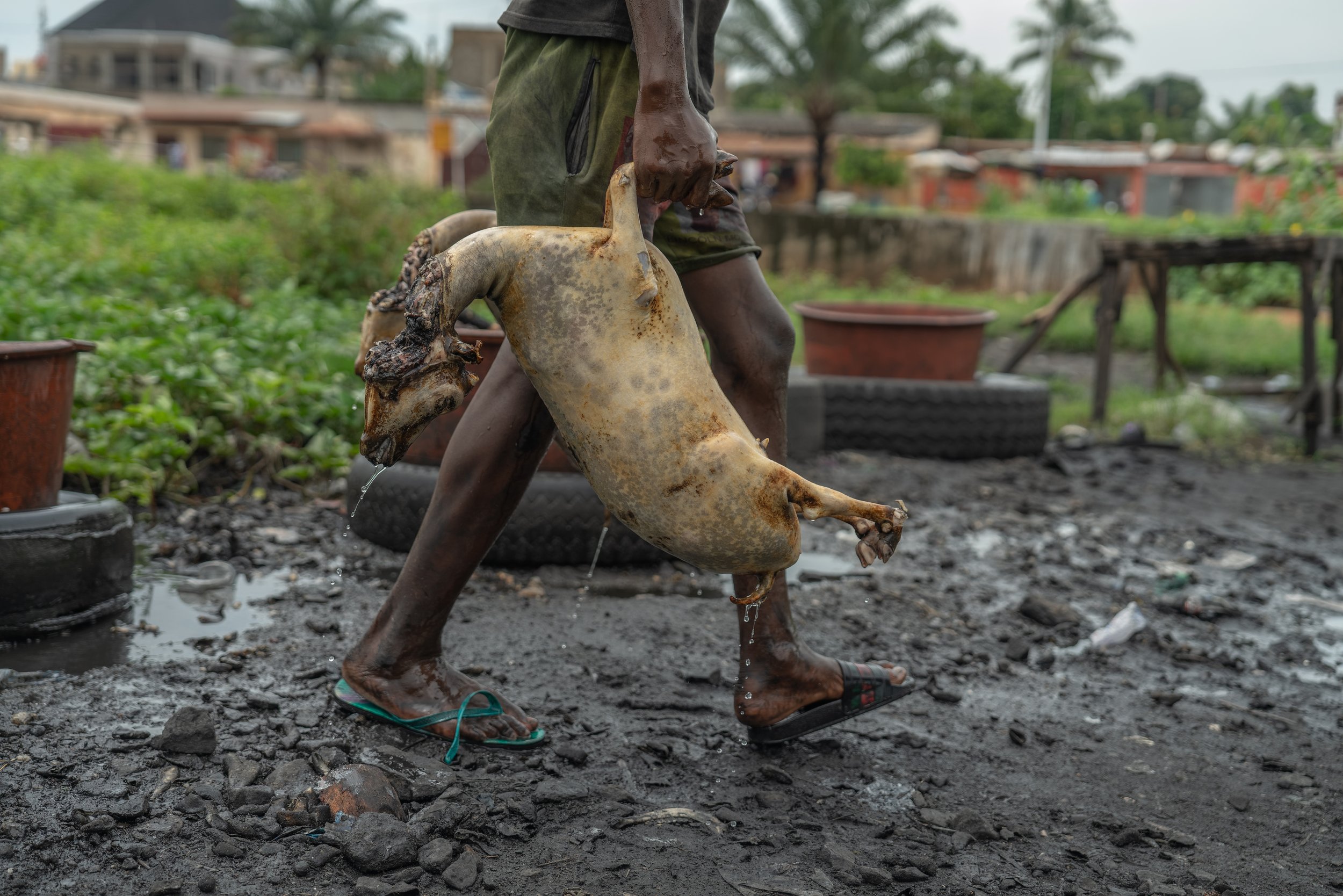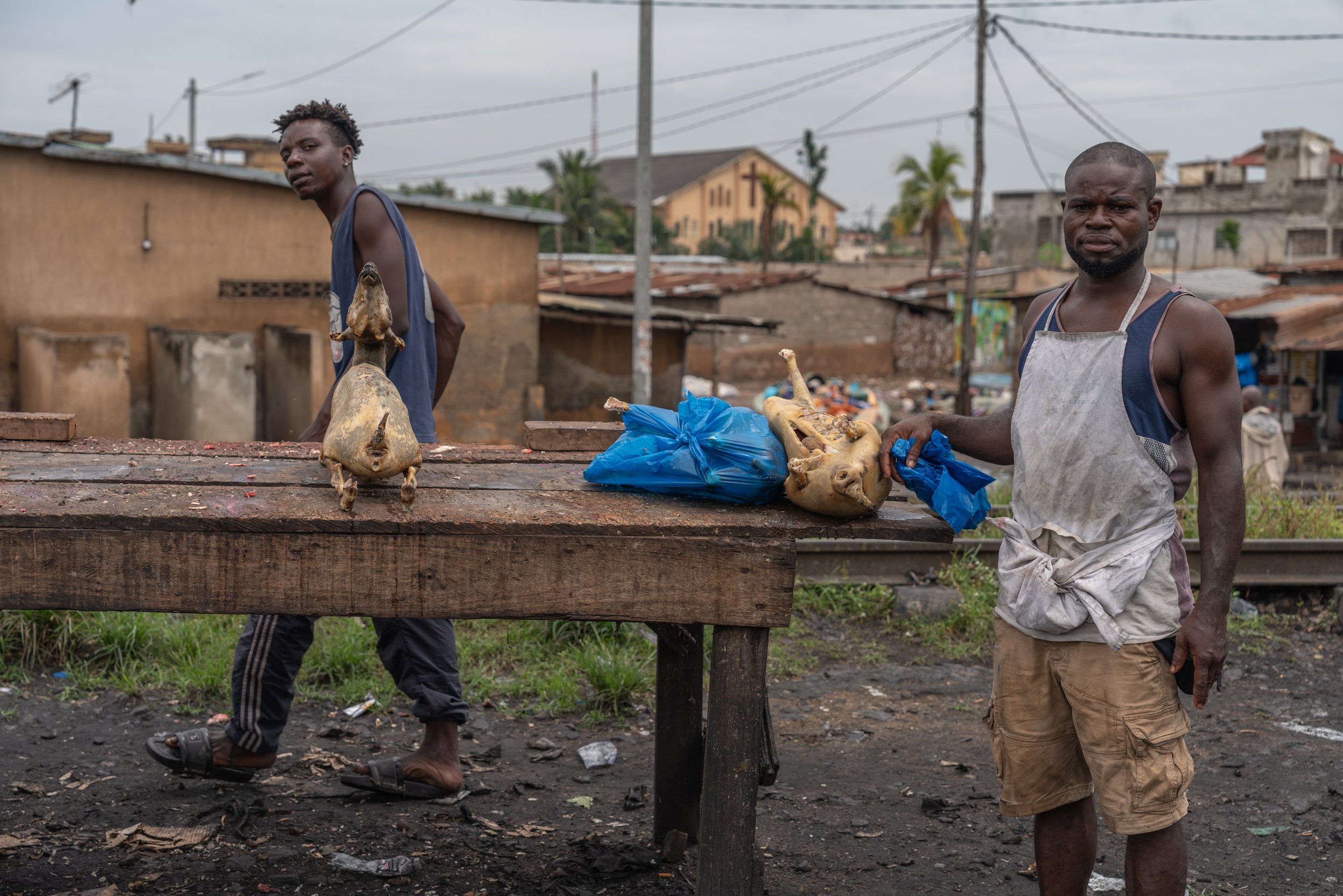CLANDESTINE SLAUGHTERHOUSE, LOMÉ, TOGO
Illegal slaughterhouses are unfortunately a worrying reality in many parts of the world, including Lomé, the capital of Togo.
These illegal establishments often operate outside food safety regulations and standards, posing serious problems for public health, animal welfare and the environment. In this photographic report, we will explore the conditions of a clandestine slaughterhouse in Lomé, highlighting the challenges faced by workers and consumers, as well as the consequences on animals and the ecosystem.
When you enter a clandestine slaughterhouse in Lomé, you are often struck by the lack of hygiene and safety. The premises are often unhealthy, the equipment obsolete, and the absence of appropriate health controls is an obvious risk to the health of consumers. Hygiene standards are not respected, which promotes the spread of food-borne diseases.
The working conditions of employees in these slaughterhouses are also alarming. They are often exposed to major risks due to the lack of safety and protection training. Workers are often poorly paid and exploited, leaving them vulnerable to precarious working conditions.
With regard to animal welfare, clandestine slaughterhouses generally follow no regulations to minimize animal suffering. Animals are often treated in an inhumane manner, which raises ethical concerns. Cruelty to animals is not only morally unacceptable, it can also influence the quality of the meat produced.
Regarding the environment, clandestine slaughterhouses often generate polluting waste. Wastewater and poorly managed organic waste can contaminate soils and water resources, with negative impacts











